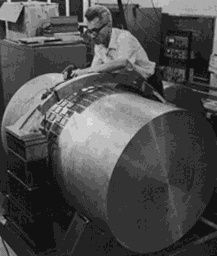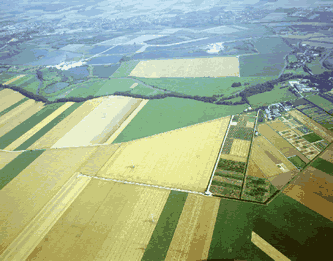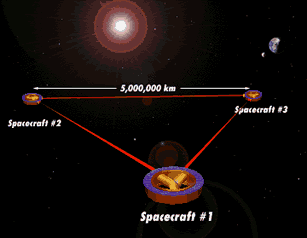
In order to understand how to detect gravitational waves, it is necessary to understand their effect on physical objects. This effect is best illustrated by considering a ring of test particles hit by a gravitational wave, with the wave travelling in a direction perpendicular to the plane of the ring. As the wave passes through the particle ring, the initially circular configuration will start oscillating with two distinct polarisation known as h-plus and h-cross. It is these periodic displacements that gravitational wave detectors aim to measure. The change of separation of the particles is minute, which makes its detection a highly non-trivial task.

Even though the prediction of gravitational waves dates back as far as the early twentieth century and the first papers on General Relativity, it was not until the sixties that the first serious attempts were made to detect them. In his pioneering work Joe Weber used a large metal bar and tried to measure the oscillations of the bar caused by a passing gravitational wave. A number of such bar detectors are still in operation today.
|
|
 |
A new generation of detectors is currently being developed, using rather different
technology. These detectors are large scale `laser interferometers'. Each L-shaped
detectors consists of two arms, typically a few kilometres long, along which
laser beams are reflected back and forth.
|
|
 |
By analysing the phase of the reflected light, tiny displacements of the test masses at the end of each interferometer arm can be detected. Even for these large instruments, the change in length will be of the order of one ten-thousandth of the diameter of an atomic nucleus. It is only the recent advance in laser technology that enables us to measure displacements of this microscopic size. Currently five such gravitational detectors are under construction, the Anglo-German GEO 600, the Japanese TAMA, the Franco-Italian VIRGO project, and two American LIGO detectors. The Japanese TAMA detector is already gathering data and the other interferometers are likely to go online within the next year.
A further project currently under consideration by ESA and NASA is the Laser
Interferometer Space Antenna or LISA which is planned to consist of three spacecraft
forming an equilateral triangle, with the whole configuration orbiting the sun.
LISA will complement the ground based detectors by operating with a much larger
baseline of 5 million km, thus making accessible a different frequency range
in the spectrum of gravitational waves.
|
An artist's view of LISA . Three spacecraft in an orbit
around the sun play the role of test particles, with a passing gravitational
wave changing the relative separation of the three. The change in separation
is monitored by phase-locked laser signals.
|
 |